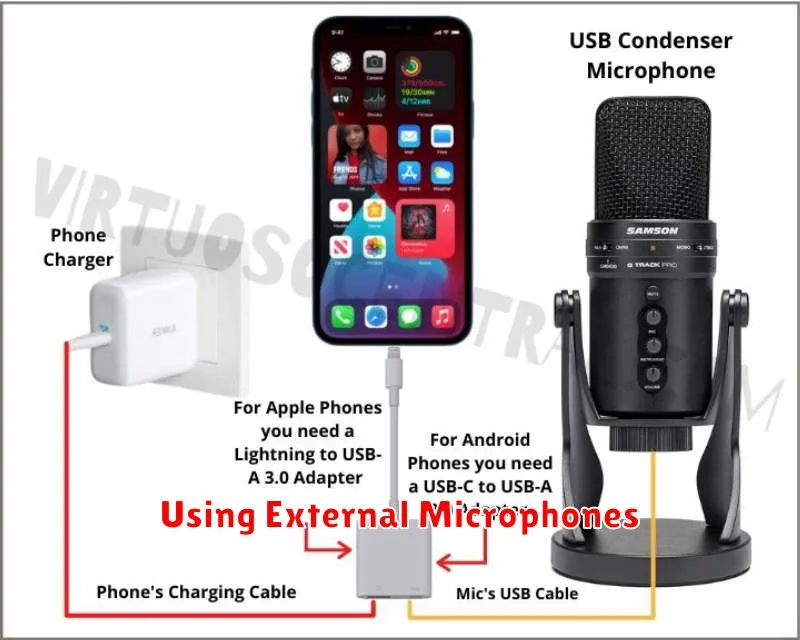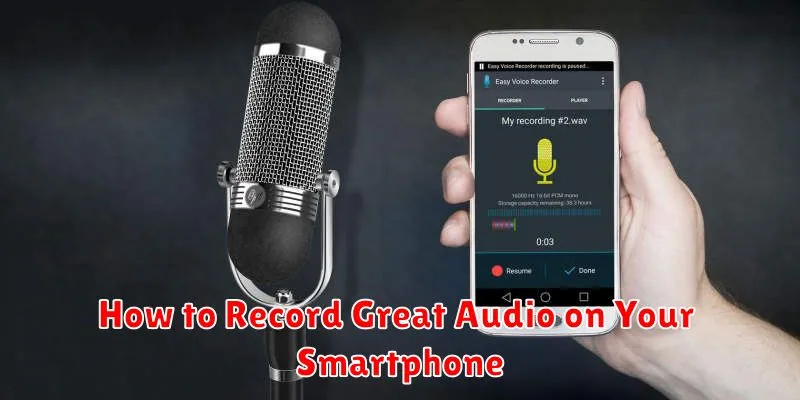Want to create high-quality audio recordings using just your smartphone? It’s easier than you think! This comprehensive guide provides practical tips and techniques to help you capture professional-sounding audio directly on your mobile device. Whether you’re recording a podcast, music, or just capturing an important conversation, learning how to record great audio on your smartphone is an invaluable skill. We’ll cover everything from choosing the right recording app to understanding essential audio recording techniques that will elevate your recordings to the next level.
From exploring microphone options and optimizing smartphone settings to minimizing background noise and utilizing audio editing techniques, this guide is your one-stop resource for achieving crystal-clear audio. Discover how to maximize your smartphone’s recording capabilities and unlock the potential for producing amazing audio quality. Learn the secrets to recording great audio on your smartphone and start creating polished audio content today.
Choosing the Right Recording App
Your smartphone’s built-in voice recorder might suffice for simple notes, but for high-quality audio, a dedicated recording app is essential. The right app offers features like adjustable bitrates, multiple file formats, and noise reduction, enabling significantly better recordings.
Consider these factors when selecting an app:
- Recording Formats: Look for support for uncompressed formats like WAV for the best quality, or compressed formats like MP3 for smaller file sizes.
- Bitrate Control: Higher bitrates generally mean better audio quality, but also larger files. Choose an app that lets you adjust this setting.
- Noise Reduction: Some apps offer built-in noise reduction to minimize background distractions.
- Interface: A clean and intuitive interface makes recording and managing files easier.
Using External Microphones

While your smartphone’s built-in microphone is convenient, using an external microphone can dramatically improve your audio quality. External microphones offer higher sensitivity, lower noise floors, and better directionality. This allows you to capture cleaner, clearer audio with less background noise and a more focused sound.
Several types of external microphones are compatible with smartphones, including lavalier microphones (small clip-on mics), shotgun microphones (highly directional mics ideal for isolating sound sources), and USB microphones. Choosing the right microphone depends on your specific recording needs and environment.
Most smartphones require an adapter to connect an external microphone. Be sure to purchase the correct adapter for your device, typically a TRRS to TRS adapter or a USB adapter. Once connected, your smartphone should automatically recognize the external microphone and use it for recording.
Ideal Settings for Voice vs Music
Recording voice and music on your smartphone requires different settings for optimal results. Voice recordings prioritize clarity and minimizing background noise. Sample rates of 44.1kHz or 48kHz are generally sufficient, with a bit depth of 16-bit. Focus on using noise reduction features and selecting a quiet environment.
Music recordings, however, demand higher fidelity to capture the nuances and dynamic range of instruments. A higher sample rate, such as 96kHz or even 192kHz, and a 24-bit depth will preserve more detail. Disable any noise reduction, as it can negatively affect the music’s quality. Consider using an external microphone for enhanced audio capture.
Reducing Background Noise
Minimizing background noise is crucial for achieving high-quality audio recordings on your smartphone. A quiet environment is the ideal starting point.
Identify noise sources. Common culprits include wind, traffic, HVAC systems, and electronic hum. Once identified, take steps to mitigate their impact. Closing windows or moving to a quieter room can drastically improve your recording.
Consider using a dedicated microphone. External microphones offer better noise rejection compared to a smartphone’s built-in microphone. If a dedicated microphone is not available, utilizing the smartphone’s headphone microphone can provide a slight improvement.
Tips for Interview and Podcast Recording
Conducting interviews and recording podcasts on your smartphone requires attention to a few key details for optimal audio quality. Location is paramount; choose a quiet space free from distractions and background noise. A small, furnished room often absorbs sound better than a large, empty one.
Microphone placement is also crucial. Position the microphone close to the subject, ideally 6-12 inches away. For multiple participants, consider using a multi-track recording app or individual devices synced later.
A test recording is essential. Before starting the actual interview or podcast, record a short sample to check audio levels and identify any unwanted noise. This allows for adjustments and prevents issues later.
Editing and Enhancing Your Audio
Even with careful recording, minor imperfections can remain. Fortunately, many readily available tools can help polish your audio. Most smartphones have basic editing software pre-installed. These often allow you to trim unwanted sections from the beginning or end of your recording.
For more advanced editing, consider dedicated audio editing apps. These apps offer features such as noise reduction, equalization, and compression. Noise reduction helps to minimize background sounds like hum or hiss. Equalization adjusts the balance of different frequencies, and compression helps to even out the loudness of your recording. Experiment with these tools to find the settings that work best for your audio.

